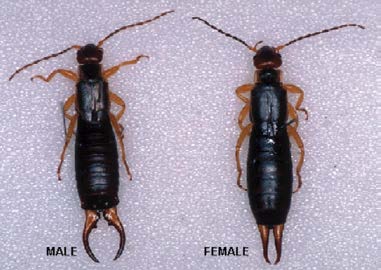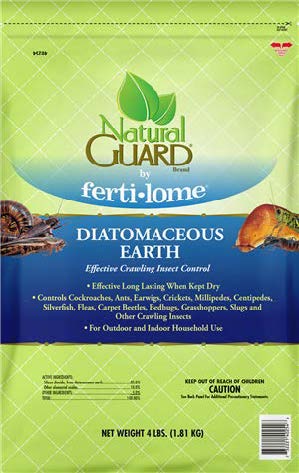Controlling Earwigs

The name earwig came from the belief that these insects would crawl into the ears of sleeping people and bore into the brain. This is just a superstition and they actually do not crawl into human ears, but the name has stuck.
The most distinguishing feature of earwig is the claw-like pinchers on the abdomen of the insect (see top image). The pinchers on the female are fairly straight (see lower image), where the pinchers on the male are much more formidable looking. They mostly use these pinchers for protection, but they may use them to capture prey.

Earwigs are mostly scavengers, eating whatever they can find, although they will often feed on plants when other food sources are scarce. They are active at night and generally hide during the day in cracks, crevices and under objects.
Mating occurs in the fall, females dig burrows and lay the eggs. They go through 4 stages before becoming adults. Generally there is only one generation per year.
Controlling Earwigs
Earwigs are nocturnal, this means they feed at night and hide during the heat of the day. This can be helpful when trying to get good control. I would apply in the evening for best control.
The first step to control of earwigs is the reduction of hiding spots. They like dark, moist locations so remove things they can hide under, like; dead plants, bark, boards, sticks, etc. The first product of choice for most Universities is, Natural Guard Bug, Slug and Snail Bait. Apply this product in the late afternoon and slightly moisten. The wheat gluten bait will attract them as
they emerge to feed. Within minutes of feeding they will stop feeding and will go back to their hiding spot to die in the next day or so.
Natural Guard Bug Slug and Snail Bait
Another good choice for drier locations or inside is, Natural Guard Diatomaceous Earth this does not have a bait, so apply in areas where you see them traveling and do not moisten.
Natural Guard Diatomaceous Earth
Other liquids would include, HY 38 Plus and HY Bug Blaster 2.4. These are hard chemistry and can not be used around edibles, but will leave a longer lasting residue.
A granular choice would be HY Vegetable & Ornamental Insect Control Granules.





